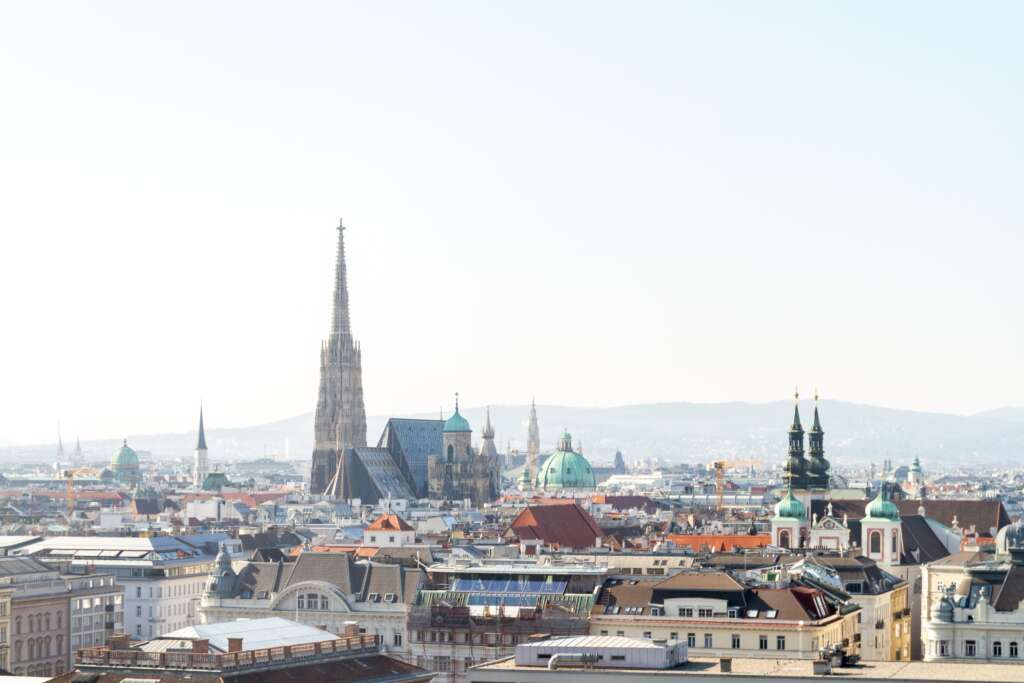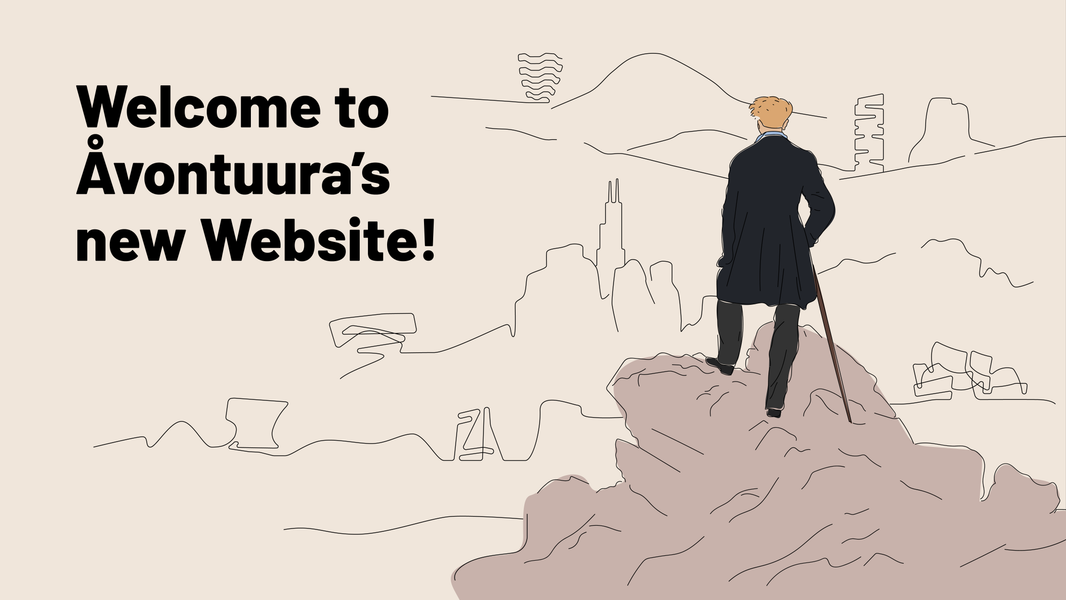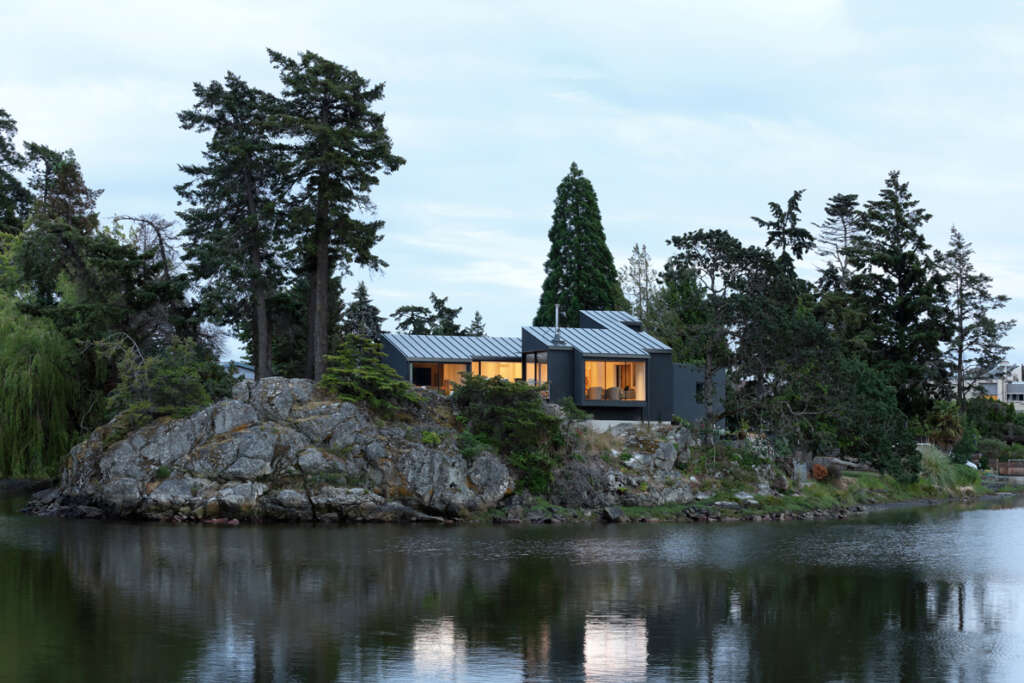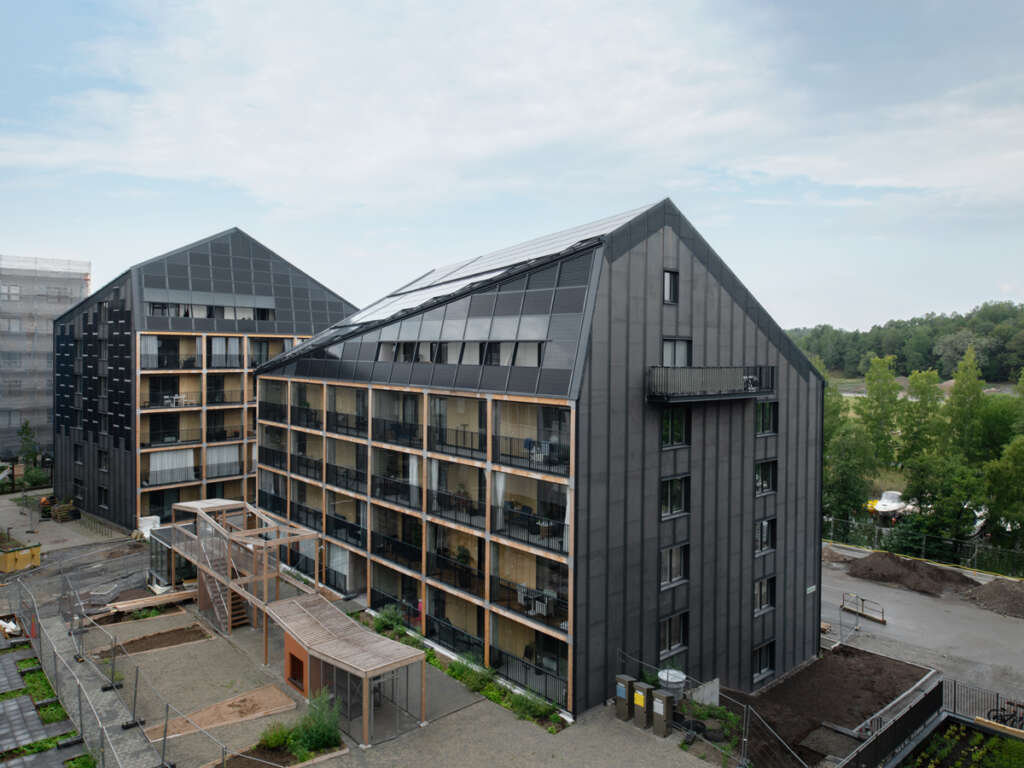
A stunning and eclectic mix of historic, modern and contemporary architecture, Vienna is a sight to behold and an absolute must-visit for architecture lovers of styles and backgrounds. For all its old European charm and cultural history, Vienna is brimming with innovation and a cultural vibrancy that you can see throughout its many historic and new neighbourhoods.
Below is our comprehensive list of the MUST-SEE Architecture in Vienna. I hope you find it useful as you stroll its historic streets (there’s a map at the bottom to guide you around). If you want to see your photo featured, hashtag #AVONTUURA on Instagram and we'll try our best to include it.
Onwards!
Historic Architecture
Schönbrunn Palace
Schönbrunn Palace was the main summer residence of the Habsburg rulers, located in Hietzing, Vienna. The name Schönbrunn (meaning “beautiful spring”) has its roots in an artesian well from which water was consumed by the court. The 1,441-room Rococo palace is one of the most important architectural, cultural, and historic monuments in the country. The history of the palace and its vast gardens spans over 300 years, reflecting the changing tastes, interests, and aspirations of successive Habsburg monarchs. It has been a major tourist attraction since the mid-1950s. Wikipedia
Practical Information
Architect: Johann Bernhard Fischer von Erlach, Nicolò Pacassi
Built: 1700
Type: Palace
Address: Schönbrunner Schloßstraße 47, 1130 Wien, Austria
Open to the Public: Yes
Website: www.schoenbrunn.at/
Stephanskirche (St. Stephen’s Cathedral)
St. Stephen's Cathedral is the mother church of the Roman Catholic Archdiocese of Vienna and the seat of the Archbishop of Vienna, Christoph Cardinal Schönborn, OP. The current Romanesque and Gothic form of the cathedral, seen today in the Stephansplatz, was largely initiated by Duke Rudolf IV (1339–1365) and stands on the ruins of two earlier churches, the first a parish church consecrated in 1147. The most important religious building in Vienna, St. Stephen's Cathedral has borne witness to many important events in Habsburg and Austrian history and has, with its multi-coloured tile roof, become one of the city's most recognizable symbols. Wikipedia
Practical Information
Architect: Anton Pilgram
Built: 1160
Type: Cathedral
Address: Stephansplatz 3, 1010 Wien, Austria
Open to the Public: Yes
Website: www.stephanskirche.at/
Hofburg Imperial Palace
The Hofburg is the former principal imperial palace of the Habsburg dynasty. Located in the centre of Vienna, it was built in the 13th century and expanded several times afterwards. It also served as the imperial winter residence, as Schönbrunn Palace was the summer residence. Since 1946 it is the official residence and workplace of the president of Austria. Wikipedia
Practical Information
Architect: Johann Bernhard Fischer von Erlach
Built: 1279
Type: Palace
Address: 1010 Vienna, Austria
Open to the Public: Yes
Website: www.wien.info/de/sightseeing/sehenswuerdigkeiten/imperiales/hofburg-wien
Austrian Parliament Building
The Austrian Parliament Building in Vienna is where the two houses of the Austrian Parliament conduct their sessions. The building is located on the Ringstraße boulevard in the first district Innere Stadt, near Hofburg Palace and the Palace of Justice. It was built to house the two chambers of the Imperial Council (Reichsrat), the bicameral legislature of the Cisleithanian (Austrian) part of the Austro-Hungarian Empire. Since its construction, the Parliament Building has been the seat of these two houses, and their successors—the National Council (Nationalrat) and the Federal Council (Bundesrat)—of the Austrian legislature. Wikipedia
Practical Information
Architect: Theophil Hansen
Built: 1883
Type: Civic
Address: Dr. Karl Renner-Ring 3, 1017 Wien, Austria
Open to the Public: Yes
Website: www.parlament.gv.at/
Vienna Secession
The Vienna Secession is an art movement, closely related to Art Nouveau, that was formed in 1897 by a group of Austrian painters, graphic artists, sculptors and architects, including Josef Hoffman, Koloman Moser, Otto Wagner, and Gustav Klimt. They resigned from the Association of Austrian Artists in protest against its support for more traditional artistic styles. Their most influential architectural work was the Secession Building designed by Joseph Maria Olbrich as a venue for expositions of the group. Their official magazine was called Ver Sacrum (Sacred Spring, in Latin), which published highly stylised and influential works of graphic art. In 1905 the group itself split, when some of the most prominent members, including Klimt, Wagner, and Hoffmann, resigned in a dispute over priorities, but it continued to function, and still functions today, from its headquarters in the Secession Building. In its current form, the Secession exhibition gallery is independently led and managed by artists. Wikipedia
Practical Information
Architect: Joseph Maria Olbrich
Built: 1898
Type: Art Institute, Convention Centre
Address: Friedrichstraße 12, 1010 Wien, Austria
Open to the Public: Yes
Website: www.secession.at/
Palmenhaus Schönbrunn
The Palmenhaus Schönbrunn is a large greenhouse in Vienna, Austria featuring plants from around the world. It opened in 1882. It is the most prominent of the four greenhouses in Schönbrunn Palace Park, and is also among the largest botanical exhibits of its kind in the world, with around 4,500 plant species. Wikipedia
Practical Information
Architect: Franz Xaver Segenschmid
Built: 1881
Type: Greenhouse, Restaurant
Address: Burggarten 1, 1010 Wien, Austria
Open to the Public: Yes
Website: www.palmenhaus.at/
Wiener Rathaus (Vienna City Hall)
Vienna City Hall is the seat of local government of Vienna, located on Rathausplatz in the Innere Stadt district. Constructed from 1872 to 1883 in a Neo-Gothic style according to plans designed by Friedrich von Schmidt, it houses the office of the Mayor of Vienna as well as the chambers of the city council and Vienna Landtag diet. For a brief period between 1892-1894, the Vienna City Hall was the world's tallest building, until it was eclipsed by Milwaukee City Hall. Wikipedia
Practical Information
Architect: Friedrich von Schmidt
Built: 1883
Type: City Hall
Address: Friedrich-Schmidt-Platz 1, 1010 Wien, Austria
Open to the Public: Yes
Website: www.wien.gv.at/
Peterskirch (St. Peter's Church)
The construction of the new Baroque church was begun around 1701 under Gabriele Montani, who was replaced by Johann Lukas von Hildebrandt in 1703. The design was inspired by the St. Peter's Basilica of the Vatican in Rome. Francesco Martinelli was the main architect. By 1722, most of the building was finished, and in 1733 the Peterskirche was finally consecrated to the Holy Trinity. The new church was the first domed structure in baroque Vienna. Due to the confinement of available space, it was built in a very compact form, with its oval interior housing an astonishing amount of space and rectangular attachments. The church makes an overwhelming impression on the visitor with its surprisingly rich interior filled with golden stucco. Wikipedia
Practical Information
Architect: Gabriele Montani
Built: 1733
Type: City Hall
Address: Peterspl. 1, 1010 Wien, Austria
Open to the Public: Yes
Website: www.peterskirche.at/
Staatsoper (Vienna State Opera)
The 1,709-seat Renaissance Revival venue was the first major building on the Vienna Ring Road. It was built from 1861 to 1869 following plans by August Sicard von Sicardsburg and Eduard van der Nüll, and designs by Josef Hlávka. The opera house was inaugurated as the "Vienna Court Opera" (Wiener Hofoper) in the presence of Emperor Franz Joseph I and Empress Elisabeth of Austria. It became known by its current name after the establishment of the First Austrian Republic in 1921. The Vienna State Opera is the successor of the Vienna Court Opera, the original construction site chosen and paid for by Emperor Franz Joseph in 1861. Wikipedia
Practical Information
Architect: Victor Eduard van der Müll, August Sicard von Sicardsburg
Built: 1869
Type: Opera Hall
Address: Opernring 2, 1010 Wien, Austria
Open to the Public: Yes
Website: www.wiener-staatsoper.at/
Judenplatz Holocaust Memorial
The Judenplatz Holocaust Memorial also known as the Nameless Library stands in Judenplatz in the first district of Vienna. It is the central memorial for the Austrian victims of the Holocaust and was designed by the British artist Rachel Whiteread. Wikipedia
Practical Information
Architect: Rachel Whiteread
Built: 2000
Type: Memorial
Address: Judenpl., 1010 Wien, Austria
Open to the Public: Yes
Website: www.jmw.at/
St. Rupert’s Church
St. Rupert's Church is a Romanesque church, traditionally considered to be the oldest church in the city, St. Rupert's Church is dedicated to Saint Rupert of Salzburg, patron saint of the salt merchants of Vienna. The church is located in one of the oldest parts of the city, the section of the Roman Vindobona. Wikipedia
Practical Information
Architect: unknown
Built: 1740
Type: Church
Address: Ruprechtspl. 1, 1010 Wien, Austria
Open to the Public: Yes
Website: www.erzdioezese-wien.at/
Karlskirche (St. Charles Church)
The Rektoratskirche St. Karl Borromäus, commonly called the Karlskirche , is a Baroque church located on the south side of Karlsplatz in Vienna, Austria. Widely considered the most outstanding baroque church in Vienna, as well as one of the city's greatest buildings, the church is dedicated to Saint Charles Borromeo, one of the great counter-reformers of the sixteenth century. Located just outside of Innere Stadt in Wieden, approximately 200 meters outside the Ringstraße, the church contains a dome in the form of an elongated ellipsoid. Wikipedia
Practical Information
Architect: Johann Bernhard Fischer von Erlach
Built: 1737
Type: Church
Address: 1040 Vienna, Austria
Open to the Public: Yes
Website: www.erzdioezese-wien.at/karlskirche
Albertina Museum
The Albertina is a museum in the Innere Stadt. It houses one of the largest and most important print rooms in the world with approximately 65,000 drawings and approximately 1 million old master prints, as well as more modern graphic works, photographs and architectural drawings. Apart from the graphics collection the museum has recently acquired on permanent loan two significant collections of Impressionist and early 20th-century art, some of which will be on permanent display. Wikipedia
Practical Information
Architect: Louis de Montoyer, Joseph Kornhäusl
Built: 1774
Type: Museum
Address: Albertinaplatz 1, 1010 Wien, Austria
Open to the Public: Yes
Website: www.albertina.at/en/
St. Francis of Assisi Church
The construction of the church celebrated the 50th anniversary of the reign of Emperor Franz Joseph I of Austria. A competition was held to select the design and was won by architect Victor Luntz. The four-bay, basilica-like brick building was intended as a garrison church; designed in the Rhenish-Romanesque style, its three red-tiled towers are visible several kilometres away. Wikipedia
Practical Information
Architect: Victor Luntz
Built: 1910
Type: Church
Address: Mexikopl. 12, 1020 Wien-Leopoldstadt, Austria
Open to the Public: Yes
Website: www.erzdioezese-wien.at/
Linke Wienzeile Buildings
The Linke Wienzeile Buildings are two apartment buildings constructed by Otto Wagner in 1898-99 in the Vienna Secession style. They are both lavishly decorated with colorful tiles, sculpture and wrought iron. One house, at 40 Linke Wienzeile, has a facade covered with majolica, or glazed earthenware tiles in floral designs, is popularly known as the Majolica House. The second, at 38 Linke Wienzeile, is called the Medallion House, for the bronze medallions on the facade. It also features sculpted angels on the roof. A third building nearby, at 3 Köstlergasse, was the town residence of Wagner for a time. Wikipedia
Practical Information
Architect: Otto Wagner
Built: 1899
Type: Apartment
Address: Linke Wienzeile 40, 1060 Wien, Austria
Open to the Public: No
Griechenkirche (The Holy Trinity Greek Orthodox Church )
The current building is a Byzantine Revival re-design of the Mollner building by Danish-Austrian neo-classic architect Theophil Hansen. Greek-Austrian diplomat and philanthropist Simon Sinas funded the project one of many collaborations with Hansen in Vienna and Athens. The cathedral was inaugurated on December 21, 1858. The exterior features two-tone brickwork and gilded archways. The elaborately ornamented sanctuary shows a stylish allusion to Baroque church architecture typical of southern Germany and Austria. A number of frescoes for the facade and vestibule were commissioned from the Austrian painter and art professor Carl Rahl, with other frescoes by Ludwig Thiersch. Wikipedia
Practical Information
Architect: Peter Müllner, Theophil Hansen
Built: 1787
Type: Church
Address: Fleischmarkt 13, 1010 Wien, Austria
Open to the Public: Yes
Website: www.metropolisvonaustria.at/index.php/de/
Postsparkasse (Austrian Postal Savings Bank)
The Austrian Postal Savings Bank building is a famous building in Vienna, designed and built by the architect Otto Wagner. The building is regarded as an important work of Vienna Secession, branch of Art Nouveau. It was constructed between 1904 and 1906 using then completely new reinforced concrete, and was opened on 17 December 1906. Extension was added between 1910 and 1912. Wikipedia
Practical Information
Architect: Otto Wagner
Built: 1905
Type: Bank
Address: Georg-Coch-Platz 2, 1010 Wien, Austria
Open to the Public: Yes
Website: www.ottowagner.com/about-the-museum/
Flakturm Stiftskaserne
Flak towers were large, above-ground, anti-aircraft gun blockhouse towers constructed by Nazi Germany. There were 8 flak tower complexes in the cities of Berlin (3), Hamburg (2), and Vienna (3) from 1940 onwards. The towers were operated by the Luftwaffe to defend against Allied strategic air raids against these cities during World War II. They also served as air-raid shelters for tens of thousands of local civilians. Wikipedia
Practical Information
Built: 1940
Type: Anti-aircraft gun blockhouse towers
Address:
Open to the Public: Yes
Hundertwasserhaus
The Hundertwasserhaus is an apartment house in Vienna, Austria, built after the idea and concept of Austrian artist Friedensreich Hundertwasser with architect Joseph Krawina as a co-creator. This expressionist landmark of Vienna is located in the Landstraße district on the corner of Kegelgasse and Löwengasse. The Hundertwasserhaus is one of Vienna's most visited buildings and has become part of Austria's cultural heritage. Wikipedia
Practical Information
Architect: Friedensreich Hundertwasser, Joseph Krawina
Built: 1985
Type: Apartment
Address: Kegelgasse 36-38, 1030 Wien, Austria
Open to the Public: Yes
Website: www.hundertwasser-haus.info/
Spittelau District Heating Plant
Practical Information
Architect: Friedensreich Hundertwasser
Built: 1992
Type: Waste incineration plant
Address: Spittelauer Lände 45, 1090 Wien, Austria
Open to the Public: Yes
Website: www.hundertwasser.at/
Modern Architecture
Wohnpark Alt-Erlaa
The Alterlaa residential and retail park is one of the largest residential complexes in Austria and forms a city within the city of Vienna with a complete infrastructure. The system is considered a showcase project of the functioning satellite city of the 1970s. Wikipedia
Practical Information
Architect: Harry Glück
Built: 1968-1985
Type: Social Housing
Address: Anton-Baumgartner-Straße 44, 1230 Wien, Austria
Open to the Public: Yes
Website: www.alterlaa-kaufpark.at/
Werkbund Estate
Practical Information
Architect: Adolf Loos, Richard Neutra, Josef Frank, Clemens Holzmeister, Margarete Schütte-Lihotzky.
Built: 1905
Type: Residential
Address: Woinovichgasse 8, 1130 Vienna
Open to the Public: Yes
Website: www.werkbundsiedlung-wien.at/
Refer and Steiner Houses
Practical Information
Architect: Adolf Loos
Built: 1910
Type: Residential
Address: St.-Veit-Gasse, 1130 Wien, Austria
Open to the Public: No
Website: www.galinsky.com/
Brutalist Architecture
Wotruba Church
The Wotruba Church was built between August 1974 and October 1976 on the basis of a model by Fritz Wotruba. Wotruba died before the completion of the church, which was inspired by a visit to Chartres Cathedral. To Wotruba, Chartres represented the essence of Europe, and Wotruba subsequently held up Chartres as a yardstick to his own work. Wotruba was first and foremost a sculptor, and the church was a collaboration with Fritz G. Mayr, who continued the work after Wotruba's death.
The building consists of 152 asymmetrically arranged concrete blocks of a size between 0.84 m3 to 64 m3, weighing from 1.8 to 141 tons; the highest block measures 13.10m. The church, which borders the Wienerwald, is 30 m long, 22 m wide, and 15.5 m high. The unusual design created some local resistance. Wikipedia
Practical Information
Architect: Ortner Fritz Wotrub
Built: 1976
Type: Museum
Address: Ottillingerpl. 1, 1230 Wien, Austria
Open to the Public: Yes
Website: www.georgenberg.at/
Contemporary Architecture
Library and Learning Centre University of Economics
Practical Information
Architect: Zaha Hadid Architects
Built: 2013
Type: Library
Address: Welthandelsplatz 1, 1020 Wien, Austria
Open to the Public: Yes
Auditorium Center at WU Campus
Practical Information
Architect: BUSarchitektur
Built: 2013
Type: Auditorium
Address: Welthandelsplatz 1, 1020 Wien, Austria
Open to the Public: Yes
Vienna University’s Law Buildings
Practical Information
Architect: CRAB studio
Built: 2013
Type: Educational
Address: WU Campus, 1020 Wien, Austria
Open to the Public: No
Wien Hauptbahnhof (Vienna Central Station)
Practical Information
Architect: Theo Hotz Partner Architekten
Built: 2017
Type: Train Station
Address: Am Hbf 1, 1100 Wien, Austria
Open to the Public: Yes
Sofitel Vienna
Practical Information
Architect: Jean Nouvel
Built: 2010
Type: Hotel
Address: Praterstraße 1, 1020 Wien, Austria
Open to the Public: Yes
Spittelau Viaducts
Practical Information
Architect: Zaha Hadid Architects
Built: 2006
Type: Apartment, Office, Artist Studios
Address: Spittelauer Lände, 1090 Wien, Austria
Open to the Public: No
DC Towers I
Practical Information
Architect: Dominique Perrault Architecture
Built: 2014
Type: Office
Address: Donau-City-Straße 7, 1220 Wien, Austria
Open to the Public: Yes
MUMOK
Practical Information
Architect: Ortner & Ortner
Built: 2001
Type: Museum
Address: Museumsplatz 1, 1070 Wien, Austria
Open to the Public: Yes
Website: www.mumok.at/
The Gasometers
Practical Information
Architect: Jean Nouvel, COOP Himmelb(l)au, Manfred Wehdorn, Wilhelm Holzbauer
Renovated: 1999-2001
Type: Apartments, Music Hall, Theatre
Address: Guglgasse 8, A-1110 Vienna, Austria
Open to the Public: Yes
Website: www.ba-halle.at/
WU Executive Academy
Practical Information
Architect: NO.MAD Arquitectos
Built: 2013
Type: Educational
Address: Welthandelsplatz 1 1, 1020 Wien, Austria
Open to the Public: No
Vienna Twin Towers
Practical Information
Architect: Fuksas
Renovated: 2001
Type: Apartments, Office
Address: Vienna Twin Tower, Wienerbergstraße 11, 1100 Wien, Austria
Open to the Public: No
Doninpark
Practical Information
Architect: LOVE architecture and urbanism
Renovated: 2013
Type: Apartments, Office, Retail
Address: Doningasse 12, 1220 Wien, Austria
Open to the Public: Yes
Map
We do our best to provide accurate and up-to-date information, locations, and opening hours whenever possible. It is recommended that you double-check any information that you may need to ensure your visit is a success.



